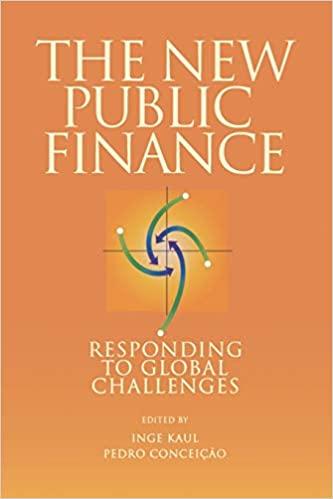Question
Assignment Exercise 183: Benchmarking Required 1. Select an organization: either from the Case Studies in Chapters 2728 or from one of the Mini-Case Studies in
Assignment Exercise 183: Benchmarking
Required 1. Select an organization: either from the Case Studies in Chapters 2728 or from one of the Mini-Case Studies in Chapters 2931. 2. Prepare a list of measures that could be benchmarked for this organization. Comment on why these items are important for benchmarking purposes. 3. Find another example of benchmarking for a healthcare organization. The example can be an organization report or it can be taken from a published source such as a journal article.
CHAPTER 29 Mini-Case Study 1: Proposal to Add a Retail Pharmacy to a Hospital in the Metropolis Health System
Sample General Hospital belongs to the Metropolis Health System. The new chief financial officer (CFO) at Sample Hospital has been attempting to find new sources of badly needed revenue for the facility. Consequently, the CFO is preparing a proposal to add a retail pharmacy within the hospital itself. If the proposal is accepted, this would generate a new revenue stream. The CFO has prepared four exhibits, all of which appear at the end of this case study. Exhibit 291, a three-year retail pharmacy profitability analysis, is the primary document. It is supported by Exhibit 292, the retail pharmacy proposal assumptions. The profitability analysis is further supported by Exhibit 293, a year 1 monthly income statement detail. Finally, Exhibit 294 presents the supporting year 1 monthly cash flow detail and assumptions.
When the controller reviewed the exhibits, she asked how the working capital of $49,789 was derived. The CFO explained that it represents 3 months of departmental expense. He also explained that the cost of drugs purchased for the first 60 days was offset by these purchases accounts payable cycle, so the net effect was 0. In essence, the vendors were financing the drug purchases. Thus, the working capital reconciled as follows:
Working Capital:
Cost of drugs (2 months)
$303,400
Vendor financing (accounts payable)
($303,400)
Departmental expense (3 months)
$49,789
Total Working Capital Required
$49,789
The controller also noticed on Exhibit 294 that the cost of renovations to the building is estimated at $80,000 and equipment purchases are estimated at $50,000 for a total capital expenditure of $130,000. The building renovations are depreciated on a straight-line basis over a useful life of 15 years, whereas the equipment purchases are depreciated on a straight-line basis over a useful life of 5 years. The required capital is proposed to be obtained from hospital sources, and no borrowing would be necessary. In addition, the total capital expenditure is projected to be retrieved through operating cash flows before the end of year 1. Exhibit 291 Sample General Hospital 3-Year Retail Pharmacy Profitability Analysis
Year 1
Year 2
Year 3
Rx Sales
2,587,613
2,692,152
2,828,375
Cost of Goods Sold
2,047,950
2,088,909
2,151,576
Gross Margin
539,663
603,243
676,799
GM %
20.9%
22.4%
23.9%
EXPENSES
Salaries and Wages
192,000
197,760
203,693
Benefits
38,400
39,552
40,739
Materials and Supplies
12,000
14,400
17,280
Contract Services and Fees
14,400
17,280
20,736
Depreciation and Amortization
15,333
15,333
15,333
Interest
Provision for Bad Debts
25,876
26,922
28,284
Misc. Exp.
3,600
4,320
5,184
Total Expense
301,609
315,567
331,248
Net Income
238,053
287,676
345,550
Operating Margin
9.2%
10.7%
12.2%
Cash Flow
Year 1
Year 2
Year 3
Sources
Net Income
238,053
287,676
345,550
Depreciation
15,333
15,333
15,333
Borrowing
Total Sources
253,386
303,010
360,884
Uses
Capital Purchasing
130,000
Working Capital
49,789
Total Uses
179,789
Cash at Beginning of Period
73,597
376,607
Net Cash Activities
73,597
303,010
360,884
Cash at Ending of Period
73,597
376,607
737,490
Volume
Year 1
Year 2
Year 3
Number of Prescriptions Sold
55,350
56,457
58,151
Courtesy of Resource Group, Ltd., Dallas, Texas. Exhibit 292 Sample General Hospital Retail Pharmacy Proposal Assumptions
Prescriptions
1.
Annual Prescription EstimatesRate of Growth/Capture
Per Day
Annual
Year 1
225
55,350
Year 2
2.0%
230
56,457
Year 3
3.0%
236
58,151
2.
Average Net Revenue per PrescriptionYearly Increases
Year 1
$ 46.75
Year 2
2.0%
$ 47.69
Year 3
2.0%
$ 48.64
3.
Bad Debt Percentage
1.0%
4.
Average Cost per PrescriptionYearly Increases
Year 1
$ 37.00
Year 2
3.0%
$ 38.11
Year 3
3.0%
$ 39.25
5.
Inflation RatesPer Year
Salary and Wages
3.0%
Other Than Prescriptions
2.0%
Benefits as a % of Salaries
20.0%
6.
Initial Capital Requirements
Building
80,000
Equipment
50,000
Working Capital
49,789
Total
179,789
Year 1
Year 2
Year 3
Gross Margin
539,663
603,243
676,799
Net Income before Taxes
238,053
287,676
345,550
Year 1
Year 2
Year 3
Beginning Cash Balance
73,597
376,607
Net Cash Activity
73,597
303,010
360,884
Ending Cash Balance
73,597
376,607
737,490
Step by Step Solution
There are 3 Steps involved in it
Step: 1

Get Instant Access to Expert-Tailored Solutions
See step-by-step solutions with expert insights and AI powered tools for academic success
Step: 2

Step: 3

Ace Your Homework with AI
Get the answers you need in no time with our AI-driven, step-by-step assistance
Get Started


